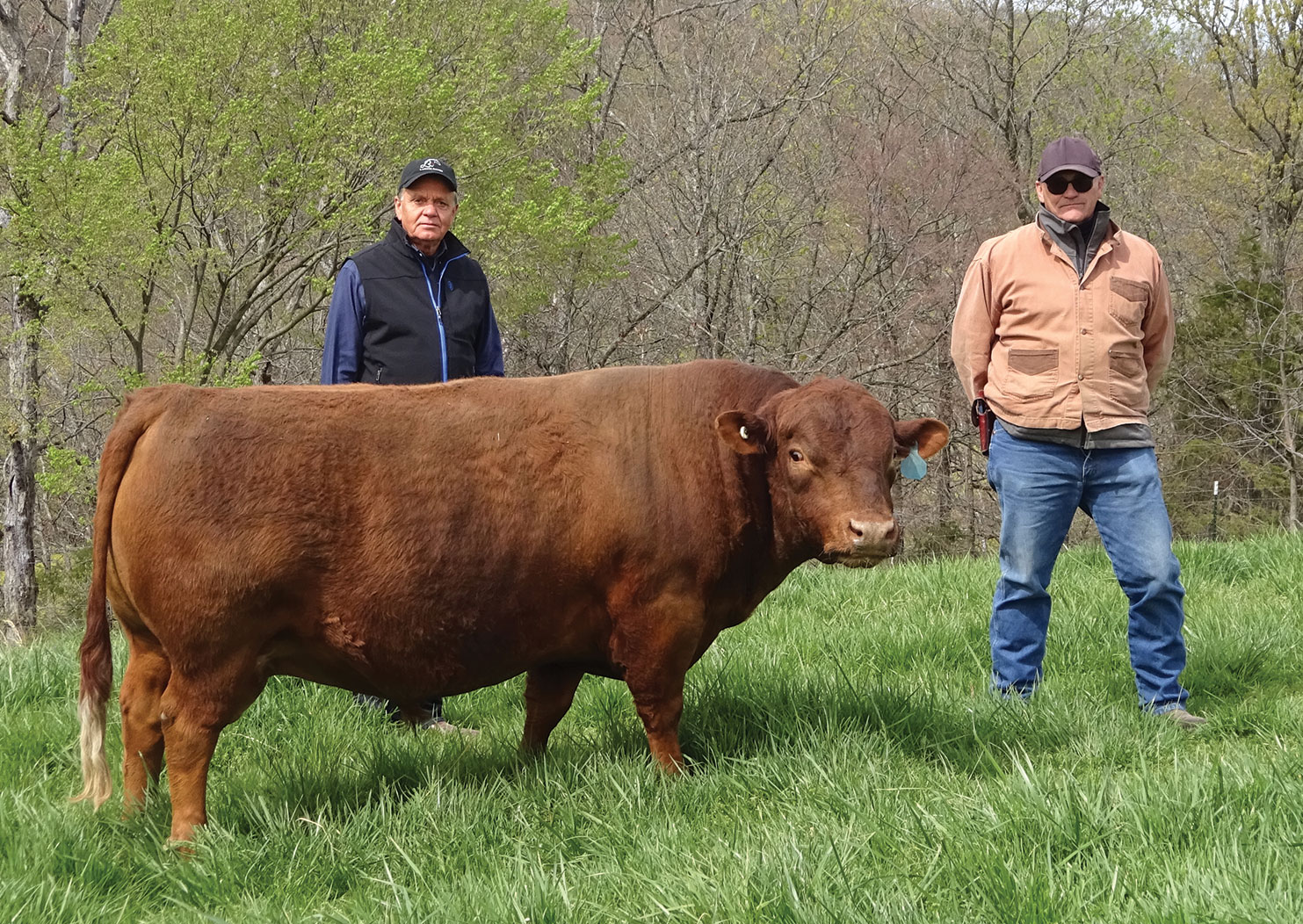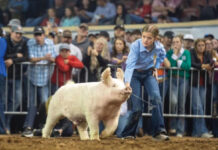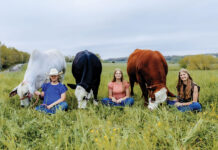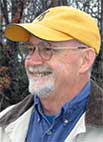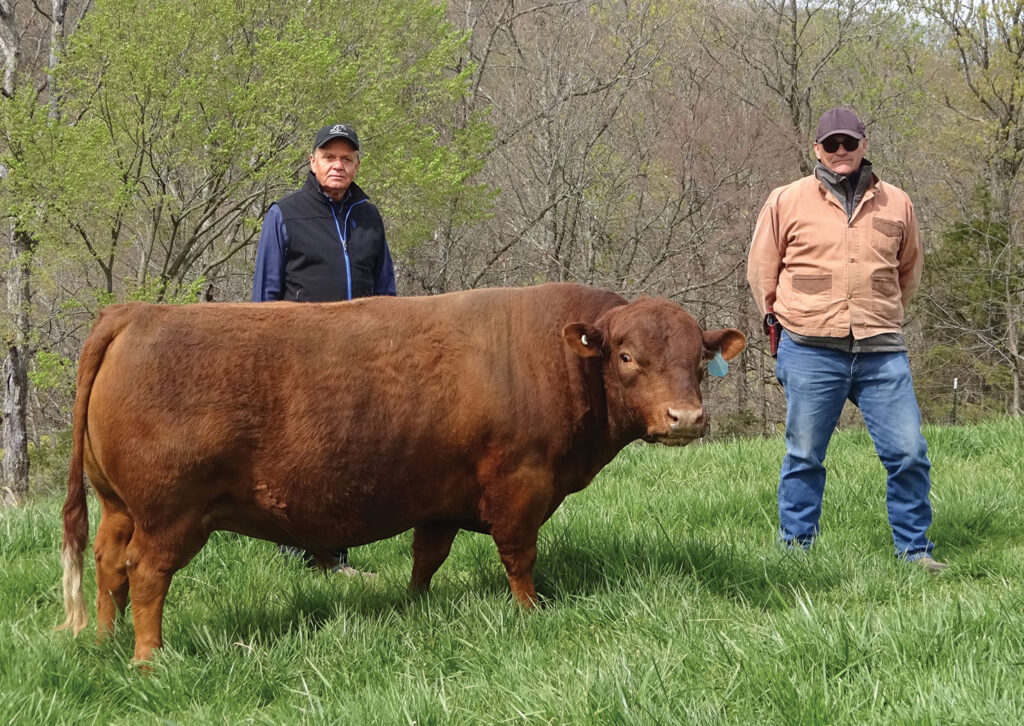
LaRose Dexter Ranch is owned by Al and Carole LaRose, and managed by livestock manager Paul Meyer, left, and general manager Mike Kleier. Photo by Kevin Thomas.
LaRose Dexter Ranch has scoured the country for the genetics they desire
BLUE EYE, MO. – The LaRose Dexter Ranch is 80 acres north of Blue Eye, Mo. The ranch is owned by Al and Carole LaRose of Houston, Texas, and general manager Mike Kleier and livestock manager Paul Meyer lead the day-to-day operations.
The pair said LaRose Ranch is developing plans for expansion as they work diligently to select, create and grow a quality herd.
The Dexter cattle breed originated in the County Kerry region of southwestern Ireland. Rural County Kerry is home to stunning natural landscapes. It is famous for its rugged terrain, Neolithic monuments, medieval castles, the island Skellig Michael, where Luke Skywalker “lived” in Starwars: The Last Jedi and, allegedly, the world’s oldest footprints. Much of the sturdiness and efficient grazing characteristics valued in the Dexter breed today were developed early and over time. Essentially, without shelter, the cattle foraged the sparse and sometimes inhospitable Irish countryside.
Dexters were introduced to the United States in the early 1900s. Today, the breed is found in all regions of the U.S. Dexters remain multi-purpose cattle that produce excellent beef and milk with high solid content for excellent butter and cheeses. Although the two primary strains of Dexter cattle are raised for beef or milk, according to the American Dexter Cattle Association (ADCA), farms and ranches in the U.S. still use Dexters as draft animals. Dexter cattle are frequently described as “solid and compact” in appearance. Most are black, though red has become desirable, and duns also occur. The LaRose herd was built only to produce red cattle.
In his research to find the cattle the owners wanted to develop the LaRose Dexter herd, Paul said one of the best contacts he made was with recognized and award-winning breeder Barbara Netti of Legend Rock Ranch in San Antonio, Texas. She was formerly on the ADCA pedigree and genetics panel and a winner of the coveted Talisman Award for her “honesty, integrity, and faithfulness” to the Dexter breed. Paul acknowledges Netti as being extremely helpful in guiding the LaRose Ranch to the select cattle they were looking for to establish their operation.
“We went all over the country to find these cows,” Paul said. “We’ve got a special herd that only breeds and reproduces themselves now. Our main reason for going with the Dexters was the meat quality and their friendliness.”
Dexters are also renowned for a high-fertility rate and few calving difficulties. Paul underscored these characteristics in the recent LaRose Ranch experience. Of the 20 calves thus far produced at the LaRose Ranch, all went flawlessly with one minor exception. The ranch managers had to help one cow deliver last winter, but both cow and calf survived and are healthy, although the cow, for a time, subsequently displayed signs of strain from that birthing.
Cattle purchased by LaRose Ranch were chosen to ensure homozygous polled cattle devoid of any undesirable genes found in the breed. The LaRose Dexters are guaranteed not to carry chondrodysplasia or pulmonary hypoplasia with anasarca (PHA).
“They all have A2A2 protein milk,” Paul said.
Along with their two breeding bulls, the LaRose herd currently contains 28 head.
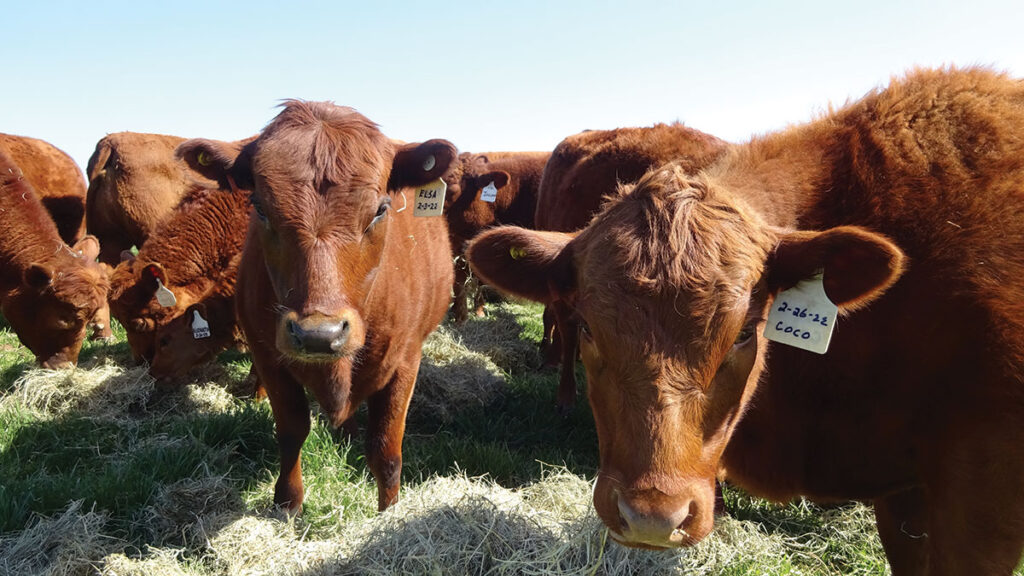
The base LaRose herd was developed with cattle from Nevada, Indiana, Texas and Tennessee. Their prize bull, FF Freedom’s Friday Knight — the Reserve Grand Champion at the 2019 Florida State Fair – was purchased from Freedom Farms in Loudon, Tenn.
“(Freedom Farms) still has over 3,000 straws on him,” Paul said.
LaRose Ranch also purchased a bull from Skip and Connie Tinney of Tinney’s Red Dexters in Fair Grove, Mo., to ensure they have quality and diverse genetics. LaRose has a show-quality cow (FF Singin the Blues) also obtained from the Tinney herd. Her calf (Billbrey’s Coco) took first place in her class at the Missouri Dexter Breeder’s Association Fall Classic last year in Marshfield, Mo.
“We don’t have any place we market our cattle to at this point,” Paul said.
Of the eight bulls born into the herd this year, all but one will be offered for sale whether as breeding bulls or steers.
They plan to be more aggressive with marketing in the future, but the animals they have sold are those that, in their view, are not shaping their herd in the direction they want. They have sold some steers and bulls to maintain a manageable ratio of bulls to cows. All their females are bred to calve early in the year.
As regards feeding and nutrition, the LaRose Ranch grows its hay on the property. They put up 90 round bales last year. They supplement the herd’s diet with MFA 14 percent Stock Grower NM pellets. Pastures grow a mixture of fescue, rye and orchardgrasses. Because Dexters are such good grazers, supplemental feeding is only minimally necessary.
“The one thing I can say about these Dexters is that they are very kind to the land,” Paul said. “They don’t take the grass down as severely as other animals.”
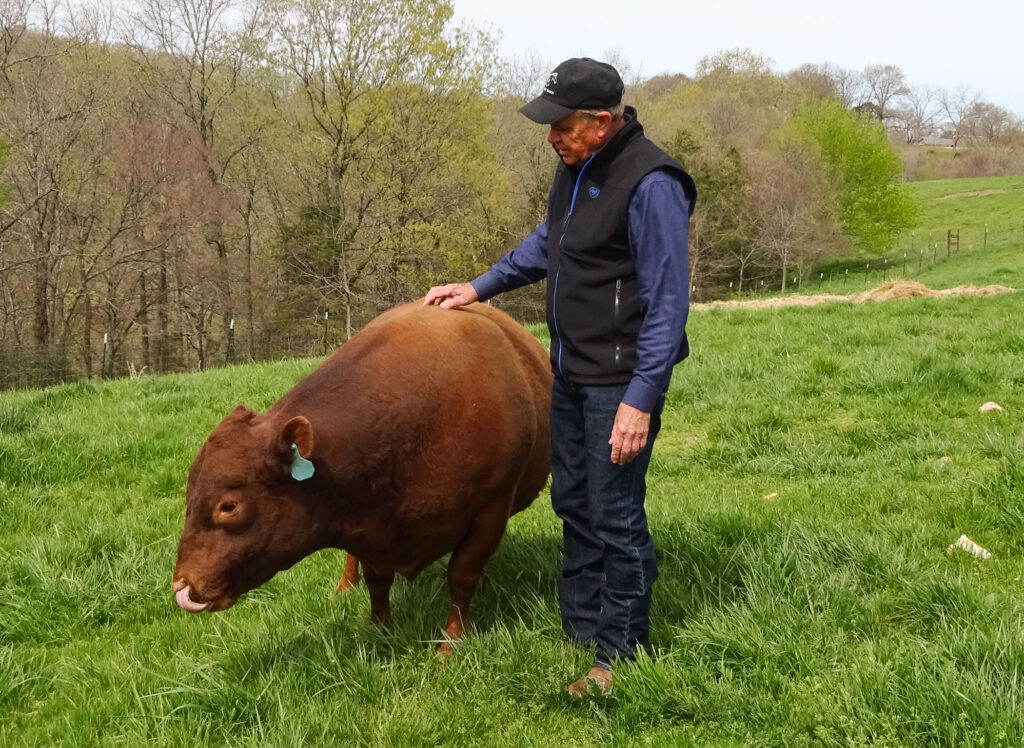
The cattle are seasonally rotated onto different areas of the ranch. Meyer noted that the Dexters do not overeat. Adding to the quality of the end product, in their approach, is the quality of the water the cattle consume. An important aspect of the LaRose Ranch protocols is a diligent routine of regularly cleaning the stock water tanks. They do not allow the tanks to get dirty or laden with algae or other impurities.
The LaRose Ranch owners are also expanding the Blue Eye operations into raising horses. Currently, Al and Carole are partners in a stable of Thoroughbreds, and just this spring, their entries won races at Oaklawn in Hot Springs, Ark., and at Turfway Park in Florence, KY. In the LaRose Ranch’s continuing efforts to deepen the equestrian aspects of their businesses also recently acquired a reining Quarter Horse (Blue Eyed Whiz) that, as a 2-year-old, has only been under saddle minimally to date.
As far as the future of the LaRose Dexters is concerned, the focus remains on the continuous development of a highly-refined herd of registered cattle. The owners have considered acquiring additional acreage to grow their base of operations as they find success. Paul also expects to again do some selective purchasing to continue refining the quality of the herd, which Al and Carole want to be the highest-quality herd possible.
“People who come here (and buy a LaRose Dexter) can be guaranteed an animal that will improve their herd,” Paul said.

